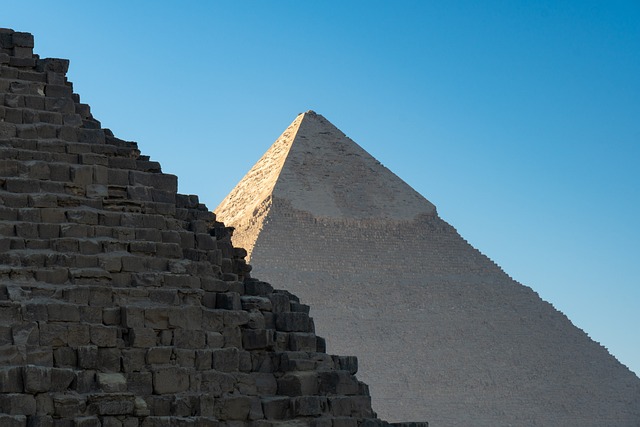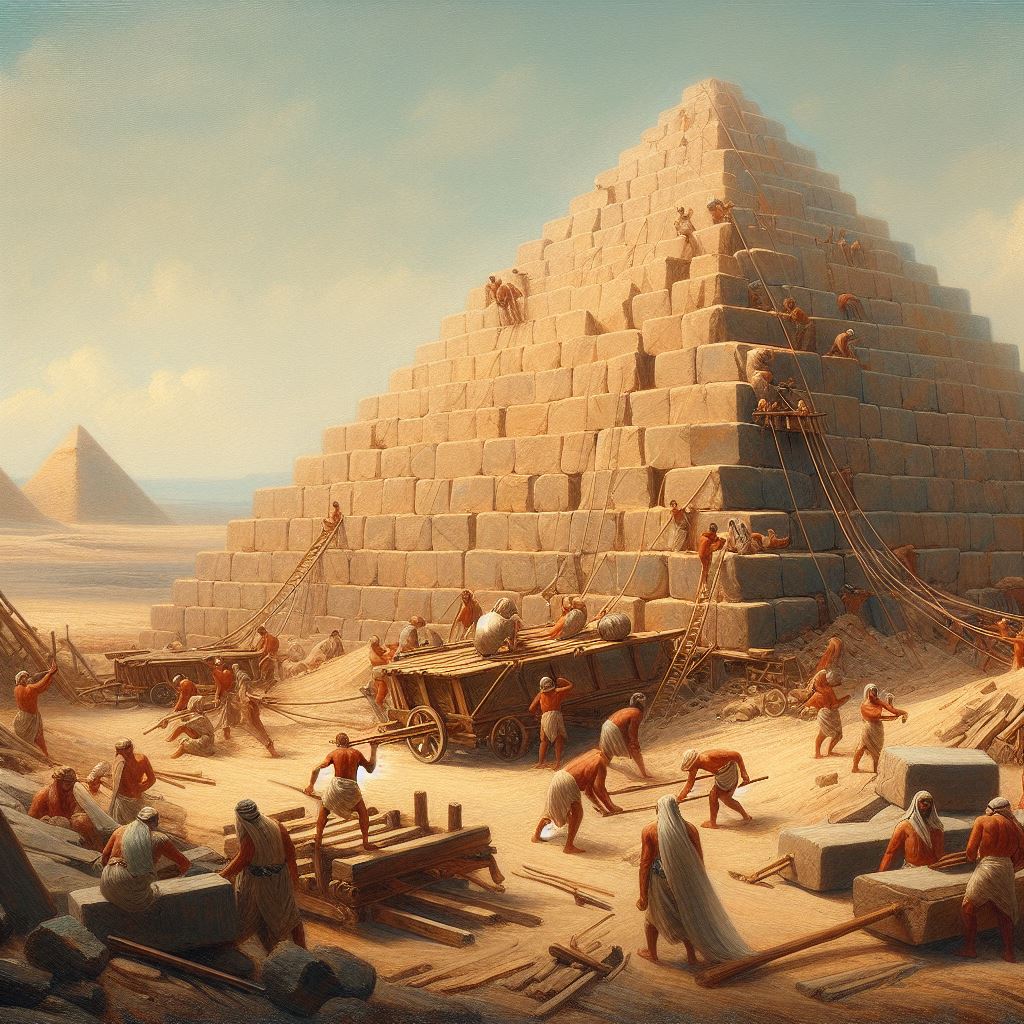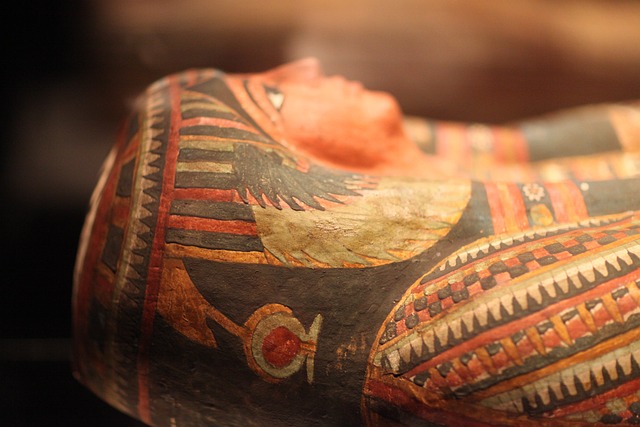The Pyramids of Giza, standing proudly on the outskirts of Cairo, Egypt, epitomize the enduring legacy of one of the world’s most captivating civilizations. These magnificent structures, composed primarily of limestone and granite, have captured the imagination of historians, archaeologists, and curious minds for centuries, offering a window into the complexities of ancient Egyptian society.
Constructed during the Old Kingdom period, over a span of approximately 85 years, the Great Pyramid of Giza, also known as the Pyramid of Khufu, stands as the largest and most renowned of the three pyramids. Believed to have been built around 2560 BCE, it rises to an impressive height of over 450 feet, towering over the desert landscape with an unmatched grandeur.

The precision and sophistication of the pyramid’s construction continue to baffle modern engineers and architects. The blocks of stone, some weighing several tons, were quarried, transported, and meticulously arranged with astonishing accuracy. Theories abound regarding the methods employed by ancient Egyptians to achieve such architectural marvels, ranging from intricate ramp systems to advanced mathematical and engineering principles.
While the primary purpose of the pyramids was as monumental tombs for the pharaohs, they also symbolized the divine authority and eternal power of Egypt’s rulers. The elaborate burial chambers within the pyramids, adorned with intricate hieroglyphs and treasures, reflect the ancient Egyptians’ beliefs in the afterlife and the importance of preserving wealth and status in eternity.
Yet, despite centuries of study and exploration, the Pyramids of Giza continue to conceal many enigmas and unanswered questions. The precise techniques used in their construction, the role of ancient Egyptian laborers and artisans, and the significance of the pyramid’s alignment with celestial bodies remain subjects of ongoing debate and speculation.
Moreover, the mysteries surrounding the purpose of the intricate passageways, hidden chambers, and intricate architectural features continue to captivate researchers and adventurers alike. From the famous “air shafts” within the Great Pyramid to the elusive secrets concealed within the Pyramid of Khafre, the pyramids continue to reveal new insights into the beliefs, customs, and technological prowess of ancient Egypt.
In addition to their historical and archaeological significance, the Pyramids of Giza stand as enduring symbols of human ambition, perseverance, and innovation. As we marvel at their timeless beauty and ponder the mysteries that shroud their ancient origins, the pyramids remind us of the boundless potential of human achievement and the enduring legacy of civilizations long past.
Unlocking the Mysteries of Ancient Engineering: The Construction of the Pyramids of Giza
In the annals of human history, few architectural marvels command as much awe and wonder as the Pyramids of Giza. Rising majestically from the sands of Egypt’s Giza Plateau, these colossal structures stand as enduring testaments to the ingenuity, skill, and determination of ancient civilizations. Yet, the construction techniques and challenges faced by the ancient Egyptians in building these monumental edifices continue to captivate the imagination of scholars and enthusiasts alike.
Constructing the pyramids was an immense undertaking that required meticulous planning, skilled craftsmanship, and an enormous labor force. The ancient Egyptians, under the reign of the Pharaohs, embarked on a grand endeavor to build tombs that would serve as eternal resting places for their divine rulers.
Central to the construction process was the acquisition of materials. Limestone and granite, the primary building materials for the pyramids, were quarried from nearby sources, with the limestone hewn from the very bedrock of the Giza Plateau itself. The extraction and transportation of these massive stone blocks posed significant logistical challenges, given the sheer size and weight of the stones involved.

Transporting blocks weighing several tons from the quarries to the construction site presented a monumental challenge. The prevailing theory suggests that ancient workers employed a combination of sledges, ramps, and possibly even water channels to move the stones across vast distances. Recent archaeological discoveries have hinted at the presence of purpose-built ramps that spiraled around the pyramid during construction, facilitating the gradual ascent of the stone blocks.
The precision with which the blocks were cut and fitted together is nothing short of remarkable. Despite the rudimentary tools available to them, ancient craftsmen achieved astonishing levels of accuracy, with joints often measuring only a few millimeters in width. The precise alignment and uniformity of the pyramid’s casing stones, meticulously fitted to form smooth, seamless surfaces, speak to the unparalleled skill and expertise of the artisans involved.
Moreover, the construction of the pyramids was not merely a feat of engineering but a testament to the collective labor and organizational prowess of ancient Egyptian society. Tens of thousands of laborers, craftsmen, and engineers toiled for decades to realize the vision of their Pharaohs, working under grueling conditions amidst the harsh desert environment.
Yet, for all the ingenuity and labor invested in their construction, the pyramids remain shrouded in mystery. Questions persist regarding the exact methods employed by ancient Egyptians to achieve such monumental feats of engineering. Theories abound, ranging from the use of internal ramps and counterweights to the possibility of advanced construction techniques lost to the sands of time.
Furthermore, the purpose and symbolism imbued within the pyramids continue to intrigue scholars and historians. Beyond serving as tombs for the Pharaohs, the pyramids represent enduring symbols of divine kingship and cosmic order in ancient Egyptian cosmology. Their alignment with celestial bodies and the intricate symbolism encoded within their design hint at deeper spiritual and religious significance.
In conclusion, the construction of the Pyramids of Giza stands as a testament to the boundless ambition and creativity of ancient civilizations. Through the ages, these magnificent structures have inspired awe and wonder, inviting us to contemplate the mysteries of the past and the remarkable achievements of our ancestors. As we continue to unravel the secrets of the pyramids, we gain new insights into the rich tapestry of human history and the enduring legacy of those who came before us.
The Profound Symbolism and Enduring Legacy of the Pyramids of Giza
The Pyramids of Giza, rising resolutely from the sands of Egypt, stand not only as architectural marvels but as profound symbols of ancient Egyptian culture, spirituality, and kingship. Beyond their imposing physical presence, these colossal structures embody layers of symbolism and purpose that continue to intrigue scholars and enthusiasts alike, offering glimpses into the beliefs and aspirations of a bygone era.
At the heart of the pyramids’ purpose lies their role as tombs for the Pharaohs, the divine rulers of ancient Egypt. While serving as repositories for the mortal remains of these revered monarchs, the pyramids also encompassed a broader cultural and religious significance that permeated every facet of Egyptian society.
Central to this symbolism is the pyramid’s distinctive shape, which was laden with profound meaning for the ancient Egyptians. Representing the primordial mound from which, according to Egyptian mythology, the world emerged, the pyramid symbolized the very essence of creation, embodying themes of rebirth, regeneration, and eternal renewal. It served as a tangible link between the earthly realm and the divine, a physical manifestation of the cosmic order that governed the universe.

Moreover, the pyramids were conceived as eternal monuments to the divine kingship of the Pharaohs, serving as enduring symbols of their authority and connection to the gods. As embodiments of earthly power and prestige, these monumental structures proclaimed the might and majesty of Egypt’s rulers for eternity, ensuring their eternal legacy and divine favor in the afterlife.
Within the labyrinthine passageways and chambers of the pyramids lay the pharaoh’s mummified body, carefully interred alongside treasures, artifacts, and offerings intended to accompany them on their journey to the realm of the gods. These elaborate burial rituals and funerary practices reflected the ancient Egyptians’ profound reverence for the deceased and their steadfast belief in the continuity of life beyond the grave.
Yet, beyond their funerary function, the pyramids served as sacred sites of pilgrimage and worship, attracting devotees from across the land who sought solace, guidance, and divine favor from the spirits of the departed pharaohs. They stood as beacons of faith and devotion, inspiring awe and reverence in all who beheld their grandeur.
As we contemplate the profound symbolism and enduring legacy of the Pyramids of Giza, we are reminded of the timeless wisdom and spiritual insight of ancient civilizations. In their towering edifices, we find echoes of humanity’s eternal quest for meaning, purpose, and transcendence, inviting us to explore the mysteries of the past and unlock the secrets of our shared heritage.
In conclusion, the Pyramids of Giza stand as enduring symbols of human ingenuity, spirituality, and aspiration, beckoning us to embark on a journey of discovery and enlightenment as we seek to unravel the mysteries of the ages and connect with the timeless wisdom of our ancestors.
Unveiling the Enigma: The Persistent Mysteries of the Pyramids of Giza
The Pyramids of Giza, standing proudly against the Egyptian skyline, have enthralled and mystified humanity for centuries. Despite centuries of dedicated study and exploration, these monumental structures continue to withhold many of their secrets, fueling an enduring sense of fascination and intrigue. As we delve into the mysteries surrounding the pyramids, we find ourselves on a captivating journey through the annals of history and human ingenuity.
One of the enduring enigmas surrounding the pyramids is the precise methods employed by the ancient Egyptians to achieve the remarkable alignment and precision that characterize these colossal structures. The debate among archaeologists and historians is ongoing, with theories ranging from the use of simple tools and ingenious engineering to the possibility of lost technologies that have faded into the sands of time. The meticulous layout and orientation of the pyramids suggest a level of mathematical and astronomical knowledge that challenges our understanding of ancient civilizations.

Exploring the interior layout of the pyramids, especially the Great Pyramid of Khufu, reveals a labyrinth of hidden chambers and passageways that continue to baffle researchers. Some chambers were designed as resting places for the pharaohs, while others, such as the mysterious hidden chambers, raise questions about their purpose and significance. The intricate design of the internal passages, coupled with the strategic placement of chambers, hints at a level of architectural sophistication that surpasses mere practicality.
Astronomical alignments add another layer of mystery to the pyramids. Some theorists propose that the pyramids were intentionally designed to align with celestial bodies, serving as celestial observatories or markers of significant astronomical events. The precision with which the pyramids align with cardinal points and the positioning of key celestial bodies during specific times of the year have led to speculation about the role of astronomy in the construction and purpose of these ancient monuments.
The very construction of the pyramids raises profound questions about the organization of labor, the social structure of ancient Egyptian society, and the motivating forces behind such monumental endeavors. The sheer scale and complexity of the construction project demand a level of coordination, engineering expertise, and workforce management that challenges conventional notions of ancient societies. Theories abound, suggesting the use of advanced engineering techniques, internal ramps, or even extraterrestrial assistance.
The role of religion and ideology in motivating the construction of the pyramids cannot be overlooked. The ancient Egyptians imbued their monumental structures with deep spiritual significance, considering them as conduits between the earthly and divine realms. The alignment of the pyramids with religious and cosmic symbols hints at a profound connection between the physical and metaphysical aspects of ancient Egyptian beliefs.
In conclusion, the Pyramids of Giza stand as timeless enigmas, challenging our understanding of the past and inviting us to unravel the mysteries that lie within their ancient stones. As we continue to explore, study, and theorize, the pyramids remain a testament to the resilience of human curiosity and the enduring allure of the unknown. The quest to decipher the secrets of the pyramids is a journey that transcends time, inviting us to peer into the depths of history and glean insights into the ingenuity and mysteries of our ancient predecessors.



Pingback: 5 Fun realities about the Pyramids of Giza - Era Exploration